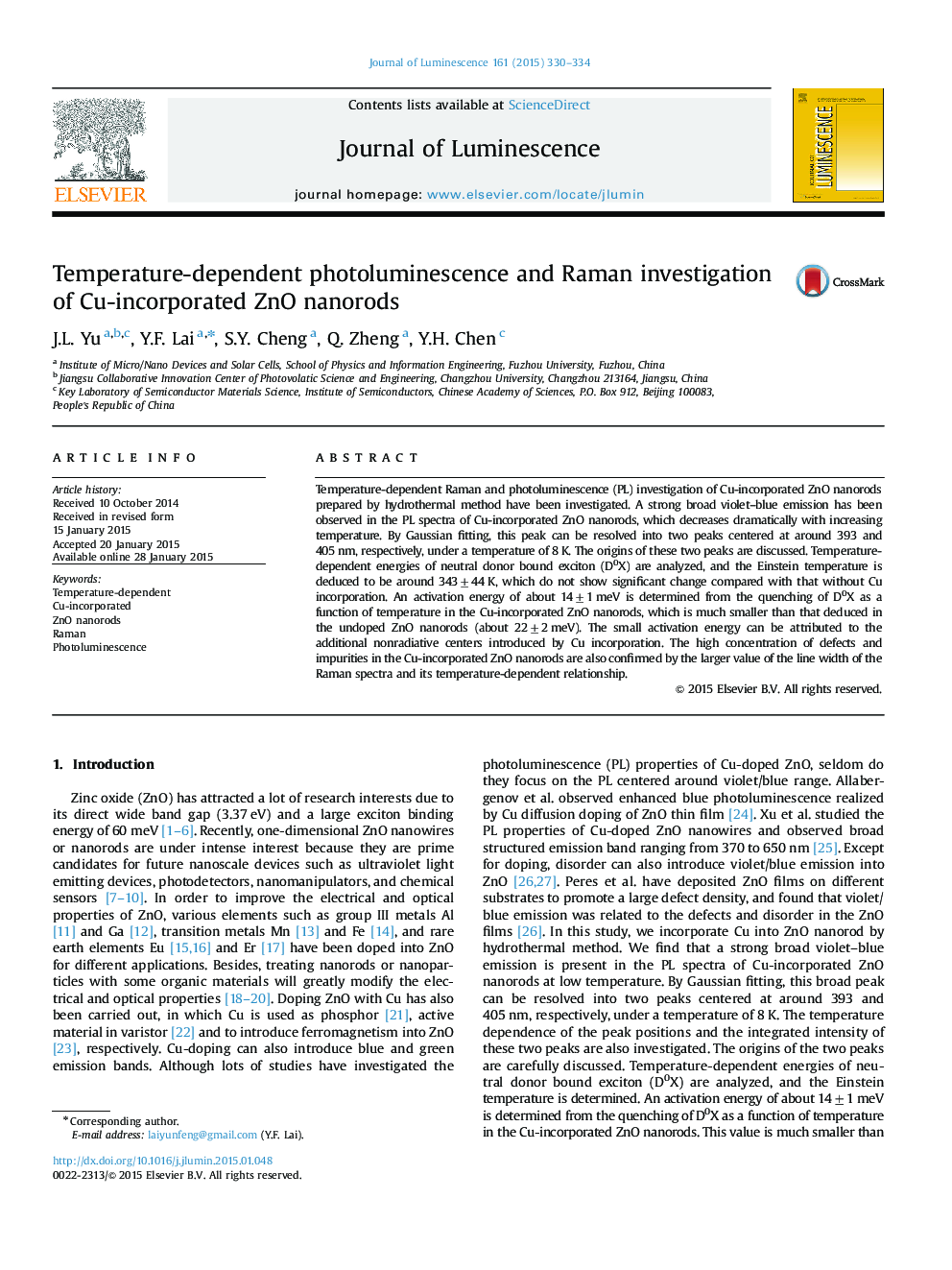| Article ID | Journal | Published Year | Pages | File Type |
|---|---|---|---|---|
| 5398965 | Journal of Luminescence | 2015 | 5 Pages |
Abstract
Temperature-dependent Raman and photoluminescence (PL) investigation of Cu-incorporated ZnO nanorods prepared by hydrothermal method have been investigated. A strong broad violet-blue emission has been observed in the PL spectra of Cu-incorporated ZnO nanorods, which decreases dramatically with increasing temperature. By Gaussian fitting, this peak can be resolved into two peaks centered at around 393 and 405 nm, respectively, under a temperature of 8 K. The origins of these two peaks are discussed. Temperature-dependent energies of neutral donor bound exciton (D0X) are analyzed, and the Einstein temperature is deduced to be around 343±44 K, which do not show significant change compared with that without Cu incorporation. An activation energy of about 14±1 meV is determined from the quenching of D0X as a function of temperature in the Cu-incorporated ZnO nanorods, which is much smaller than that deduced in the undoped ZnO nanorods (about 22±2 meV). The small activation energy can be attributed to the additional nonradiative centers introduced by Cu incorporation. The high concentration of defects and impurities in the Cu-incorporated ZnO nanorods are also confirmed by the larger value of the line width of the Raman spectra and its temperature-dependent relationship.
Related Topics
Physical Sciences and Engineering
Chemistry
Physical and Theoretical Chemistry
Authors
J.L. Yu, Y.F. Lai, S.Y. Cheng, Q. Zheng, Y.H. Chen,
